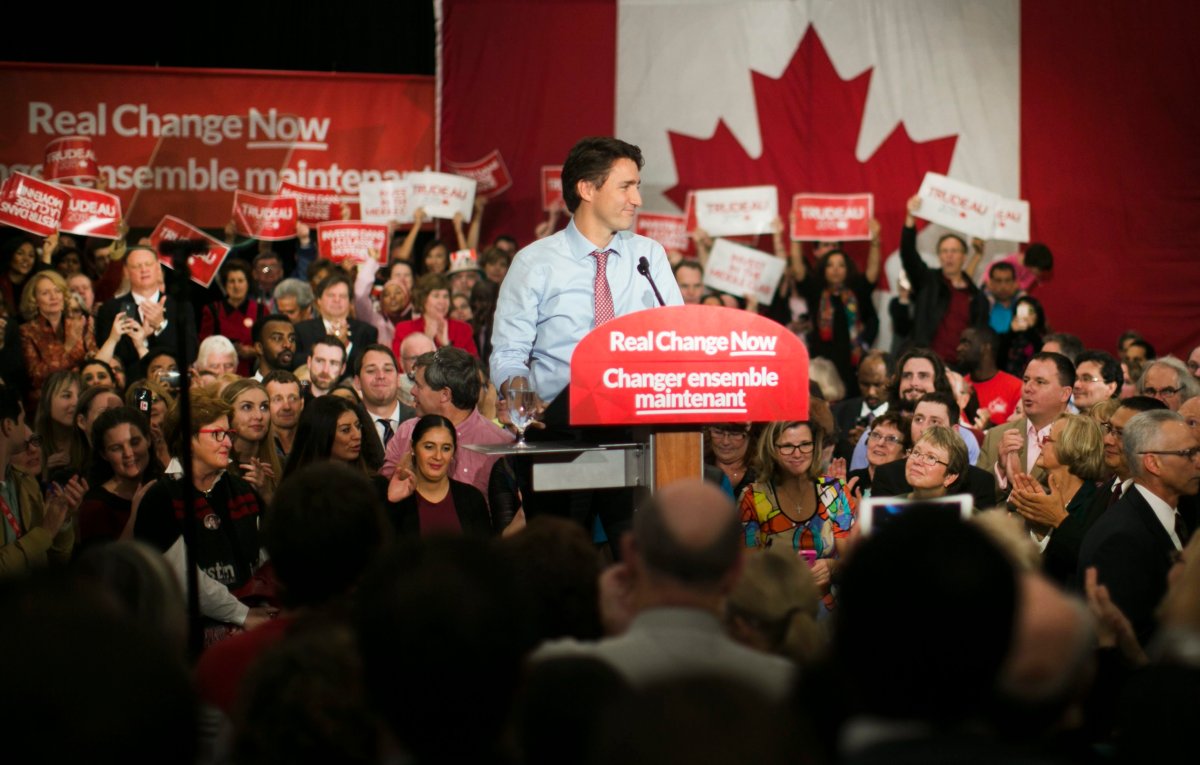Nominations for federal elections are strikingly uncompetitive and opaque, according to a new study, which says that has profound consequences for Canadian democracy.

New research by the Toronto-based Samara Centre for Democracy shows only 17 per cent of more than 6,600 federal candidates from 2003 to 2015 faced competitive nomination races, while 2,700 candidates were directly appointed by parties.
WATCH: July 10 — Former Ontario health minister Helena Jaczek to seek Liberal nomination in Markham-Stouffville

“If you see the nomination as a moment in a chain of democratic moments” leading to the election of a member of Parliament, said Michael Morden, the director of research at Samara, “I think it’s notable that, in an overwhelming majority of cases, there’s no real decision being made by local people.”
Morden said through exit interviews with MPs Samara has found there is “broad, quiet understanding” in political circles of the deficiencies of the nomination process.
But he said most Canadians have little access to or ability to scrutinize the “black box” of party nominations, despite the stake they have in how parties run their internal elections.
READ MORE: Make it three — N.S. MLA Orrell joins d’Entremont and MacLeod as federal Tory candidates
Political parties are private organizations, the Samara study says, but they’re also “public utilities” that have a profound effect on Canadian democracy.
And a lack of competition might signal a worrying disconnect with the Canadian public, the study suggests.
There are several reasons the study proposes for why races are so often uncompetitive. Snap elections account for some of it, while rules that benefit incumbents are also a factor. Then’s there’s the reality that many local party associations are just too disorganized or small to attract multiple candidates.
WATCH: April 26 — Former B.C. health minister Terry Lake seeking federal nomination

But the trend extends even to larger parties that are competitive across the country, Morden said.
“In our mind, that is still a stunning lack of competition,” he said.
Beyond the lack of competition, the study also found nominations rules also have significant effects on the diversity of nomination candidates and, consequently, the diversity of members elected to the House of Commons.
READ MORE: Tory candidates named in 316 ridings — far more than NDP, Liberal Party
Morden noted parties occasionally justify appointing candidates on the basis of diversity, but this was not borne out in the data.
In particular, the study suggests appointed candidates were less likely to be from visible-minority or Indigenous backgrounds.
The issue of female representation in the nomination processes was even more stark.
WATCH: Dec. 11, 2018 — Former news anchor Tamara Taggart will seek the federal Liberal nomination in Vancouver-Kingsway riding

In line with findings that women win elections at around the same rate as men, the study suggests female nomination candidates are just as likely to win internal races as men are.
But just 28 per cent of nomination contestants covered by the study were women.
“That shifts the focus right back to recruiting, to the general openness of the process, to the intangible factors that cause some people to find their way in and others to self-select out or to never have the option,” Morden said.
READ MORE: Rejean Hebert, former PQ minister, expected to seek federal Liberal nomination
The study found that longer nomination races and races that didn’t require monetary investment were correlated with higher female participation.
Morden said parties essentially close themselves off from a majority of Canadians through rules that make it more difficult to participate in nomination processes: short races, monetary costs, lack of information and protections for incumbents.
The study recommends corresponding changes in party policies: standard opening and closing dates for races, the obligation to report the number of votes candidates receive, and holding contests even where there are incumbent MPs.
WATCH: Jan. 5, 2018 — Former Tory hopeful unsuccessful seeking Liberal nomination

These changes are in the best interests of parties that want to stay internally strong and remain connected with the Canadian public, Morden argued.
The study also considers a potentially expanded role for Elections Canada in administering or regulating the races, something Morden acknowledges is not popular among the parties.
Parties can also be reticent to even provide information about their nomination processes, Morden said. For example, only the Green party provided information about how many candidates it screened out of its nominations in 2015.
“There’s just not a culture of openness,” Morden said.
“The nomination process is still seen as a very internal one, rather than a vehicle for mass political engagement.”
The first step in a reform process is convincing Canadians to care, Morden said, because otherwise “you’re not going to convince parties to do much.
“It’s hard to regulate parties, because parties make the law.”



Comments